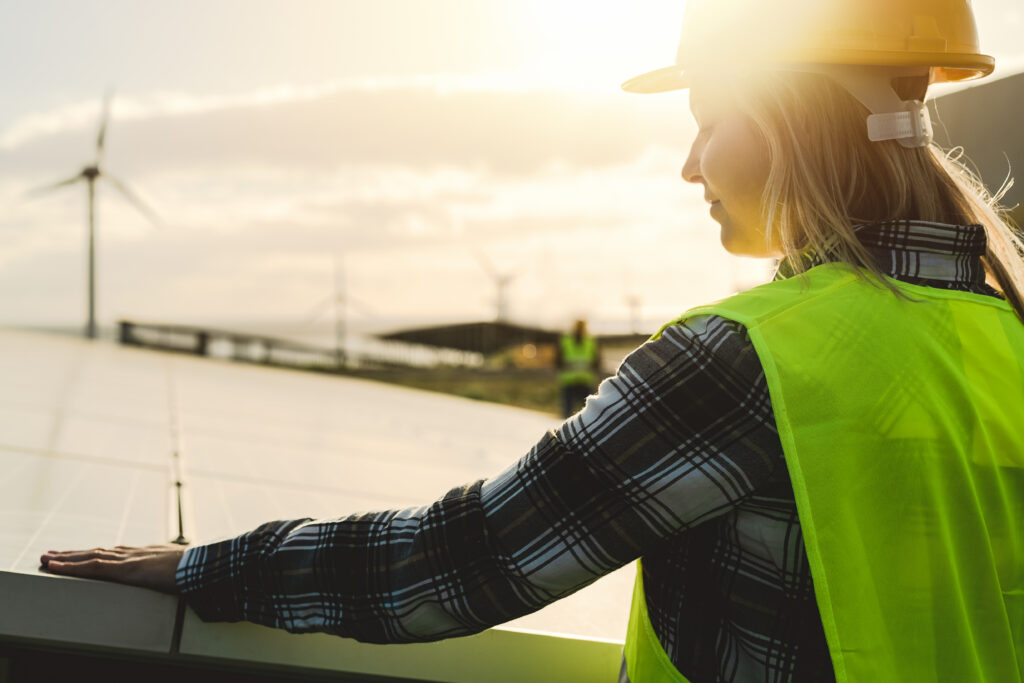Dubbed the EU’s new ‘green building law’ the revised Energy Performance of Buildings Directive (EPBD) will vote on 14 March in the EU Parliament. Is Europe ready to green up one of the continent’s most significant emission sources?
After the negotiations and the amendments tabled yesterday, these are the key points to expect from next week’s vote.
Trimming down on material and carbon footprint
A building has already emitted and consumed massive energy, even before we turn on the first light. From the footprints of materials and their energy-intensive production (e.g., steel and cement) to the wasteful demolition, more needs to be done on a policy level to reduce the energy use beyond the day-to-day use of buildings.
The revised EPBD is expected to include a historical article on Whole Life Carbon which calculates and sets targets to reduce building-related carbon emissions throughout a building’s life, alongside targets for circularity and sufficiency. These targets are promising signals for a future European building sector with reduced burdens on the environment coupled with a wave of industrial innovations of low-carbon materials scaled up for the market.
Higher performance standards
The new revision of the law will not only request buildings to be better in their energy use but also require that buildings meet minimum energy performance standards. A shocking three out of four buildings in the EU are deemed energy inefficient, which has snowballed Europe’s energy conflict with Russia into an overwhelming prevalence of energy poverty in the past year.
The minimum standards will support energy renovation buildings, focusing on the worst-performing homes in each member state to ensure that the pressures of the energy crisis are not repeated in the next decade. The new standards will be applied to the most energy-inefficient public and non-residential buildings from 2027 and 2030 for residential ones. The past year has underlined energy poverty alleviation as a priority for EU governments. These energy performance standards can be a powerful tool in protecting vulnerable households from future crises.
Left out in the cold: renewable heating
Despite the encouraging steps forward on the material and renovation front, the EPBD is held back by a loophole which will keep Europe in the dark age of fossil fuel heating. In Europe, 75% of buildings still rely on fossil heating, locking a large proportion of the population to fossil fuel dependency. For this reason, the European Environmental Agency has declared phasing fossil fuel out of Europe’s heating as a social and climate imperative. With a new boiler installed every eight seconds in Europe and many Member States still subsidising the expensive and polluting technology, the EPBD represented a once-in-a-lifetime to steer Europe towards renewable future energy security and independence systemically.
However, the text to be voted on is coming with a lifeline to the fossil fuel industry. Since previous drafts of the directive mandate the phasing out of fossil fuel boilers by 2030, defenders of the industry have lobbied hard to spare hybrid boilers from the phase-out effort altogether. If passed, these boilers will allow the continued dominant use of fossil fuels to heat our homes, as long as they are mixed with a small proportion of ‘green’ gases (e.g., hydrogen and biofuels). With serious concerns over ‘green’ gases’ viability and affordability, the only green thing about these boilers is how they are used to greenwash the fossil fuel industry, distracting policymakers and consumers from more mature, effective, and clean heating technologies like heat pumps.
Despite a strong EU rhetoric on moving away from fossil fuels and energy dependency, there has been no strong opposition to this loophole from within EU Parliament. If passed, this part of the law will be a grave setback to the transition of the world’s single largest gas market (i.e., EU buildings) to clean, renewable, and sustainable energy use.




